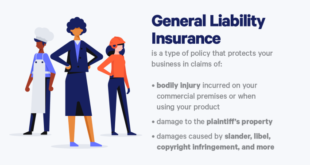Small business coi – For small businesses, navigating the complexities of insurance coverage, risk management, and claims handling can be daunting. This comprehensive guide will provide you with the knowledge and tools you need to protect your business from financial risks, minimize losses, and ensure a smooth claims process.
We’ll delve into the different types of insurance coverage available for small businesses, common risks you may face, and best practices for risk mitigation. We’ll also provide step-by-step guidance on filing and presenting a strong insurance claim, as well as strategies for reducing insurance costs while maintaining adequate coverage.
Insurance Coverage Analysis

Understanding the types of insurance coverage available is crucial for small businesses to safeguard their operations and mitigate potential financial risks. Various insurance policies provide protection against specific events or circumstances that could impact the business.
Types of Insurance Coverage
Common insurance coverage options for small businesses include:
- General Liability Insurance:Covers claims arising from bodily injury or property damage caused by the business or its employees.
- Property Insurance:Protects the business’s physical assets, such as buildings, equipment, and inventory, from damage or loss due to fire, theft, or natural disasters.
- Business Interruption Insurance:Provides coverage for lost income and expenses if the business is forced to suspend operations due to an insured event, such as a fire or natural disaster.
- Commercial Auto Insurance:Covers vehicles owned or leased by the business, providing protection against liability, property damage, and medical expenses in the event of an accident.
- Cyber Liability Insurance:Protects the business against financial losses and legal expenses resulting from data breaches, cyber attacks, or other technology-related incidents.
Importance of Understanding Policy Terms and Conditions
It is essential for small businesses to carefully review and understand the terms and conditions of their insurance policies. This includes understanding the coverage limits, exclusions, and deductibles. By thoroughly understanding the policy, businesses can ensure they have adequate protection and avoid unexpected surprises in the event of a claim.
Risk Management Strategies: Small Business Coi

Risk management is crucial for small businesses to mitigate potential threats and ensure long-term success. By proactively identifying and addressing risks, businesses can protect their operations, assets, and reputation.
Common risks faced by small businesses include financial losses, legal liabilities, operational disruptions, and cyberattacks. Effective risk management involves a comprehensive approach that includes risk assessment, mitigation strategies, and contingency planning.
Risk Assessment
The first step in risk management is to conduct a thorough risk assessment. This involves identifying potential risks, evaluating their likelihood and impact, and prioritizing them based on severity.
- Identify risks: Brainstorm potential risks across all aspects of the business, including financial, operational, legal, and reputational.
- Assess likelihood and impact: Estimate the probability of each risk occurring and the potential consequences it could have on the business.
- Prioritize risks: Focus on the risks that pose the greatest threat to the business and prioritize them for mitigation.
Risk Mitigation Strategies, Small business coi
Once risks have been identified and prioritized, the next step is to develop and implement mitigation strategies. These strategies aim to reduce the likelihood or impact of risks.
- Avoidance: Eliminate or minimize the likelihood of a risk occurring by taking proactive measures.
- Reduction: Implement measures to reduce the potential impact of a risk if it does occur.
- Transfer: Shift the risk to another party, such as an insurance company, through contracts or agreements.
- Acceptance: Accept the risk and monitor it closely, while implementing measures to minimize potential consequences.
Risk Management Plan Template
A risk management plan Artikels the steps and procedures for managing risks effectively. It should include:
- Risk assessment: Identify, assess, and prioritize risks.
- Risk mitigation strategies: Develop and implement strategies to avoid, reduce, transfer, or accept risks.
- Contingency planning: Artikel plans for responding to and recovering from potential risks.
- Monitoring and review: Establish a system for monitoring risks and reviewing the effectiveness of mitigation strategies.
Claims Handling Procedures
Filing an insurance claim can be a daunting task for small businesses, but it’s essential to ensure prompt and fair compensation in the event of a covered loss. Understanding the steps involved, documenting and presenting a strong claim, and navigating the claims settlement process can help streamline the process and increase the likelihood of a successful outcome.
Filing a Claim
- Notify your insurance company promptly:Report the loss as soon as possible to initiate the claims process.
- Gather documentation:Collect evidence to support your claim, such as invoices, receipts, photographs, and witness statements.
- Submit a formal claim:Complete and submit a claim form, providing detailed information about the loss, including the date, location, and cause.
Documenting and Presenting a Strong Claim
Proper documentation is crucial for a successful claim. Keep detailed records of all expenses related to the loss, including repair or replacement costs, lost income, and additional expenses incurred due to the incident.
Organize your documentation in a clear and concise manner, presenting it in a way that supports your claim. Consider using a spreadsheet or binder to track expenses and provide evidence.
Claims Settlement Process
Once your claim is submitted, the insurance company will assign an adjuster to investigate the loss and assess the damages.
- Investigation:The adjuster will review your documentation, inspect the damaged property, and interview witnesses.
- Settlement offer:Based on their investigation, the adjuster will make a settlement offer, which may include compensation for repairs, lost income, and other expenses.
- Negotiation:You have the right to negotiate the settlement offer if you believe it is inadequate. Be prepared to provide additional documentation or evidence to support your position.
- Settlement payment:Once an agreement is reached, the insurance company will issue payment for the covered losses.
Potential Challenges
Navigating the claims settlement process can present certain challenges, including:
- Delays:Insurance companies may experience delays in processing claims due to high claim volume or complex investigations.
- Denial of coverage:Your claim may be denied if it is not covered under your policy or if there is evidence of fraud or misrepresentation.
- Underpayment:The settlement offer may be less than what you believe is fair, requiring negotiation or additional evidence to support your claim.
Cost Considerations and Budgeting

Small businesses face unique challenges when it comes to managing their insurance expenses. Premiums can vary widely depending on factors such as industry, location, and coverage limits. Understanding these factors and implementing cost-saving strategies can help businesses optimize their insurance coverage while staying within their budget.
Factors Influencing Insurance Premiums
- Industry:Businesses in high-risk industries, such as construction or manufacturing, typically pay higher premiums due to the increased likelihood of accidents or property damage.
- Location:Businesses located in areas prone to natural disasters or crime may face higher premiums due to the increased risk of claims.
- Coverage Limits:The higher the coverage limits, the higher the premiums. Businesses should carefully assess their risk exposure and determine the appropriate level of coverage.
- Claims History:Businesses with a history of claims may be penalized with higher premiums, as insurance companies view them as higher risk.
Strategies for Reducing Insurance Costs
- Shop Around:Compare quotes from multiple insurance providers to find the most competitive rates.
- Increase Deductibles:Raising deductibles can lower premiums, but it also means the business will have to pay more out of pocket in the event of a claim.
- Implement Risk Management Measures:Installing security systems, conducting safety training, and maintaining equipment can reduce the likelihood of accidents and claims, leading to lower premiums.
- Negotiate with Insurance Providers:Businesses with a good claims history and a strong financial position may be able to negotiate lower premiums.
Budget Template for Small Business Insurance Expenses
| Expense Category | Estimated Annual Cost |
|---|---|
| General Liability Insurance | $1,000 |
| Property Insurance | $500 |
| Workers’ Compensation Insurance | $750 |
| Business Interruption Insurance | $250 |
| Cyber Liability Insurance | $200 |
| Other Insurance (specify) | $0 |
| Total Estimated Annual Insurance Cost | $2,700 |
This budget template can be customized to reflect the specific insurance needs and financial situation of each small business.
Legal and Regulatory Compliance
Adhering to insurance laws and regulations is paramount for small businesses. Failure to comply can result in penalties, legal liabilities, and reputational damage.
Federal and State Laws
- Affordable Care Act (ACA):Requires certain employers to provide health insurance to their employees.
- Employee Retirement Income Security Act (ERISA):Regulates employee benefit plans, including health insurance.
- State insurance laws:Vary by jurisdiction and cover areas such as minimum coverage requirements, policy forms, and agent licensing.
Industry Standards
In addition to legal requirements, industry standards can also impact small businesses’ insurance coverage.
- National Association of Insurance Commissioners (NAIC):Develops model insurance laws and regulations that are often adopted by states.
- Insurance Services Office (ISO):Provides standardized insurance policy forms and rating systems.
Compliance Strategies
- Review legal and regulatory requirements:Consult with an insurance professional or attorney to ensure compliance.
- Obtain necessary licenses and certifications:Agents and brokers must be licensed in the states where they operate.
- Use standardized policy forms:Adhere to industry standards to ensure coverage meets regulatory requirements.
- Maintain accurate records:Document insurance policies, claims, and other relevant information for compliance audits.
Outcome Summary
By understanding the intricacies of small business COI, you can make informed decisions about your insurance coverage, proactively manage risks, and navigate the claims process with confidence. This guide will empower you to protect your business, safeguard your financial interests, and ensure its long-term success.
Question Bank
What are the most common types of insurance coverage for small businesses?
General liability, property insurance, business interruption insurance, professional liability insurance, and workers’ compensation insurance are among the most common types of coverage for small businesses.
What are the key steps involved in filing an insurance claim?
Notify your insurance company promptly, document the incident thoroughly, gather supporting evidence, submit a formal claim, and follow up regularly to track the progress of your claim.
How can small businesses reduce insurance costs?
By implementing risk management strategies, maintaining a good claims history, bundling policies, negotiating premiums, and shopping around for quotes, small businesses can often reduce their insurance costs.
 Nenroll Nenroll News
Nenroll Nenroll News





